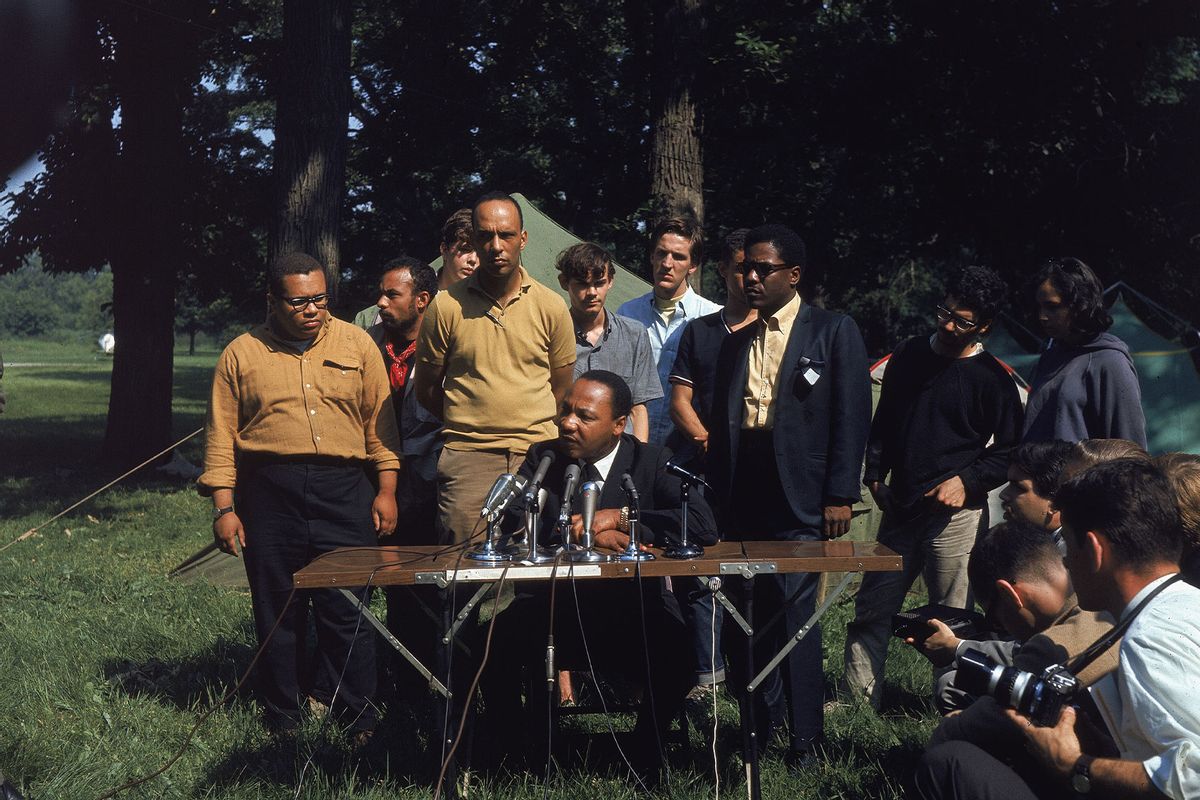As we celebrate the life and legacy of Dr. Martin Luther King on what would have been his 95th birthday, I’m reflecting on how much further we have to go to achieve his vision of racial and economic justice. These two goals are intertwined—you can’t have one without the other, and you can’t achieve either without organized labor pushing for dignity for all workers.
It’s no secret that the labor movement has recently encountered a surge in public attention. The first union leader in more than 60 years just became the senator of California: Laphonza Butler, former President of our long-term care union here in California. And from Hollywood to Detroit, workers joined together across the country to make their voices heard, which has people on both sides of the aisle taking notice.
I was born into the labor movement, with parents and grandparents who were leaders in the United Farm Workers union. My grandmother, Jessie De La Cruz, was one of the first female leaders of that union. I‘ve had the privilege of working for nearly three decades in the world of organized labor, including in my current role as the president SEIU 2015—the largest union in California representing nearly 450,000 long-term care workers.
Most care providers are women of color and the long-term care industry has been shaped by long-standing racist and sexist policies that led to a lack of investment in these frontline workers. In California, in-home care workers are 80% women, 74% people of color, and 47% immigrants. During my time at SEIU 2015, mobilizing with our care providers who are historically overworked and underpaid, I’ve seen the popularity of unions ebb and flow, as they are shaped by macroeconomic factors, cultural moments, and the ever-evolving political landscape.
Despite my steadfast belief in the power of organized labor to achieve meaningful progress for workers, I would have never envisioned a day in which the sitting President of the United States would show up to a United Auto Workers picket line. Even more encouraging, the majority of Americans support union workers and in light of recent high profile strikes, Americans are far more likely to side with union workers than with the companies involved. In today’s divisive political climate, there is naturally strong partisan politics at play in all issues including union and labor movements. But I think we are missing the larger picture by making support of unions a political issue.
I’ve seen the popularity of unions ebb and flow, as they are shaped by macroeconomic factors, cultural moments, and the ever-evolving political landscape.
At the end of the day, the core mission of organized labor is two-fold: to bring awareness to the realities and challenges that working Americans face every day and to harness the collective power of workers to achieve meaningful change in their lives, their industries, and their communities. It's not just about negotiating better contracts or benefits; it's about improving the lives of working people and their families. It’s based on the simple notion that more change can be made when you advocate together rather than alone.
Unions are surging in popularity across party lines because working people are tired of receiving poverty wages and struggling to make ends meet. In fact, a recent poll of Republican voters—who historically have supported unions less—showed that 41 percent of these individuals now believe “unions are a positive force that help workers and reduce corporate power.” This is a monumental shift in public opinion.
And it’s an exciting time for labor. We have an opportunity to work together and set the ground rules for future political involvement in organized labor—and that is: if you are an elected official, regardless of party affiliation, you need to get behind working-class people and cultivate the support of union members.
We need your help to stay independent
Despite public support for unions, membership is dropping. In 1970, unions represented nearly 30 percent of private sector workers. Today, they represent just six percent. That massive decline in organized labor coincided with a period of growing inequality and civil unrest in our country, which left everyday people and working families behind.
Today’s moment presents an opportunity for unions to play a role in realizing the American Dream. But in order to grow union membership and sustain the public momentum the labor movement has cultivated in recent years, political leaders on both sides of the aisle must recognize unions as more than just a publicity stunt or campaign stop. Instead, they need to pass legislation that makes it easier for workers to organize and prioritize the interests of workers instead of corporations. It is not enough just to say you are pro-union—elected officials need to act on it by addressing the fundamental issues of fair wages and safe working conditions through their policy choices and actions.
We are all in this fight together, regardless of race, religion, political party, or any other demographic divide. Until our country and economy start working for everyone, we will continue to see widespread strikes across the country, and in turn, more political involvement from both the right and left to cultivate support for these workers.
As Dr. King said at the Illinois AFL-CIO Convention in October 1965, “The labor movement was the principal force that transformed misery and despair into hope and progress.” We know that the labor movement continues to be that principal force.
Now is the time for elected officials and candidates for public office to meet the moment and publicly support the labor movement and pro-union policies. In the end, we know what workers want—quality and affordable health care, respect and dignity at work, living wages, a secure retirement—and elected officials must take action. Bipartisanship and unity around supporting our workers and their families is more possible than ever, it’s time to make it a reality.



Shares